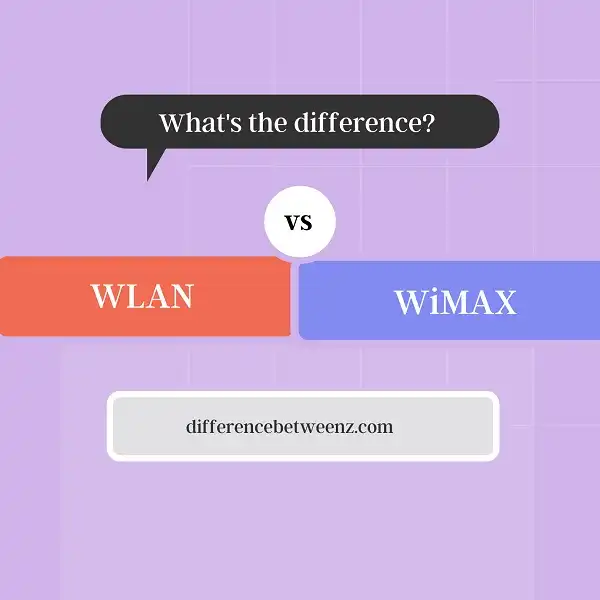Are you curious about the difference between WLAN and WiMAX? Both wireless technologies offer advantages, but they also have unique features. In this blog post, we’ll explore the key differences between WLAN and WiMAX so that you can decide which technology is right for your needs.
What is WLAN?
A Wireless Local Area Network (WLAN) is a type of computer network that uses wireless technology to connect devices. WLANs are used in a variety of settings, including homes, businesses, and public spaces such as libraries and coffee shops. The key benefit of a WLAN is that it allows devices to connect to the network without the need for physical cables. This can provide greater flexibility, as well as reduced installation and maintenance costs. Devices that can connect to a WLAN include laptops, smartphones, and tablets. Most modern routers support WLAN technology, and many new computers come with built-in wireless adapters. In order to connect to a WLAN, users simply need to enter the network’s password. Once connected, they will be able to access the Internet and any shared resources on the network.
What is WiMAX?
WiMAX is a wireless broadband technology that offers high-speed Internet access over long distances. WiMAX can be used for both fixed and mobile applications, and it offers several advantages over other wireless technologies. For example, WiMAX has a much greater range than WiFi, making it ideal for rural areas or for users who want to connect to the Internet from a moving vehicle. In addition, WiMAX supports higher data rates than most other wireless technologies, making it suitable for applications such as video streaming and VoIP. WiMAX is also more scalable than other wireless technologies, meaning that it can be easily expanded to support more users or higher data rates. While WiMAX is not yet widely available, it has great potential as a next-generation wireless technology.
Difference between WLAN and WiMAX
There are a few key differences between WLAN and WiMAX technology. Perhaps the most obvious is that WiMAX has a much larger range than WLAN – up to 50km compared to around 100m. This makes WiMAX ideal for providing coverage over large areas, such as cities or towns. WiMAX also offers higher speeds than WLAN, with peak rates of around 70Mbps compared to 54Mbps for WLAN. In addition, WiMAX supports a larger number of users than WLAN, making it better suited for applications such as video streaming and VoIP. Finally, WiMAX uses OFDMA technology, which helps to reduce interference and improve performance in crowded environments.
Conclusion
While there are some clear similarities between the two standards, there are also distinct differences. The most obvious difference is that WLAN operates in the 2.4GHz band while WiMAX uses the more spacious 4GHz band. Additionally, WiMAX offers significantly higher throughputs and can handle a greater number of simultaneous users than WLAN.


